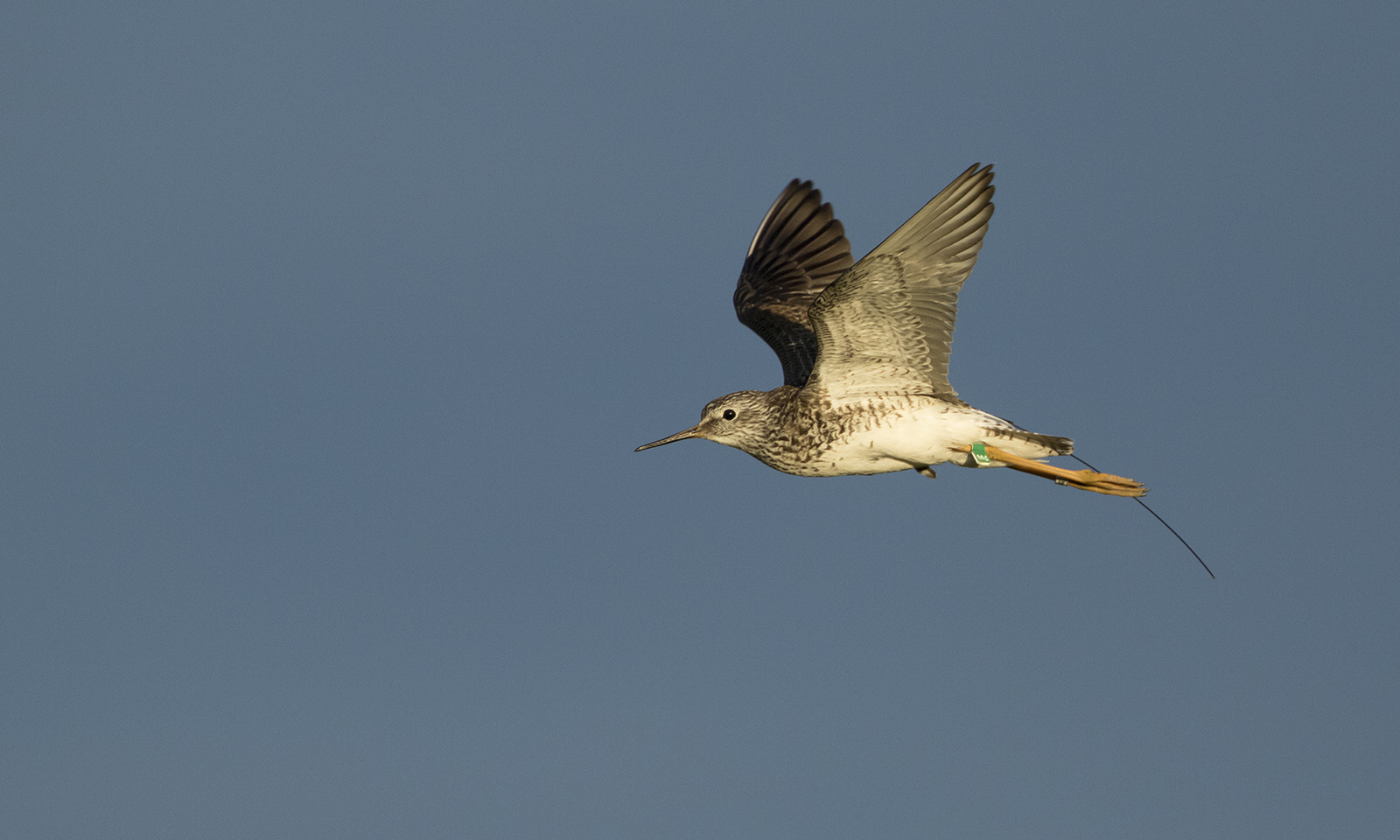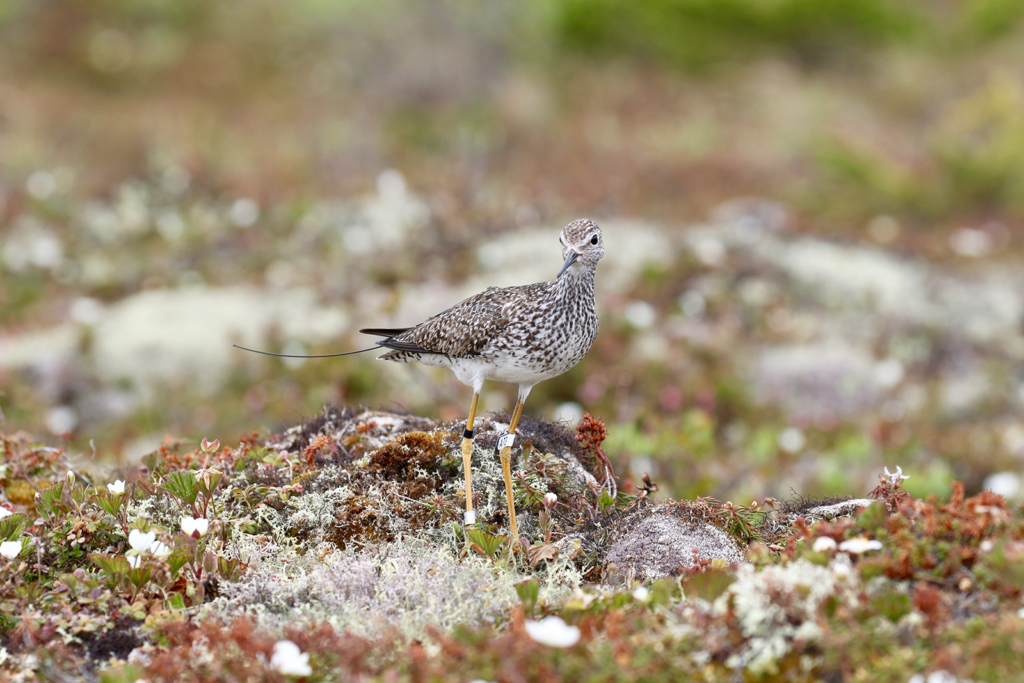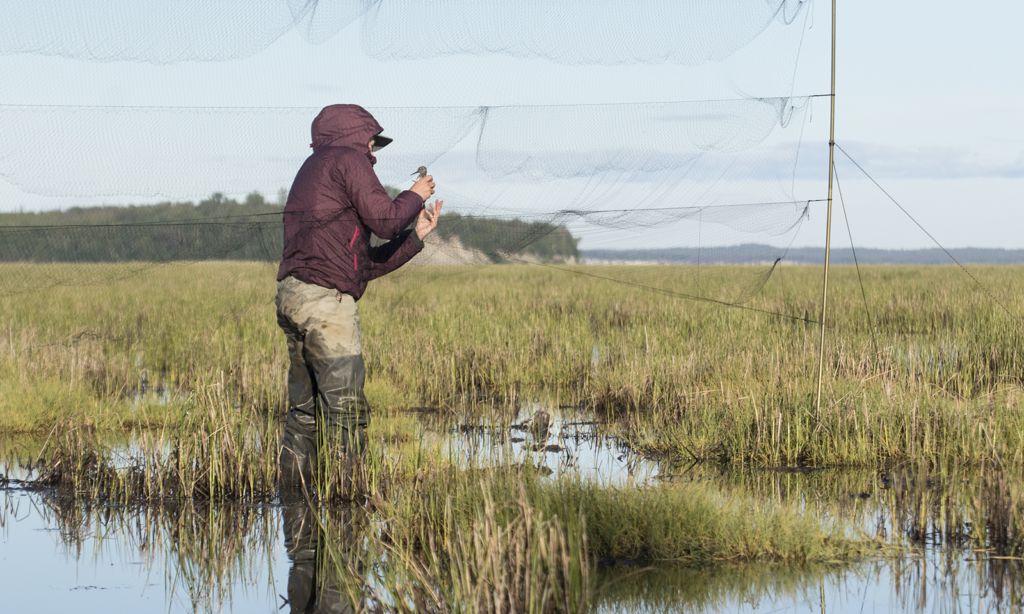Linked paper: Eastern-breeding Lesser Yellowlegs are more likely than western-breeding birds to visit areas with high shorebird hunting during southward migration by Laura A. McDuffie, Katherine S. Christie, Autumn-Lynn Harrison, Audrey R. Taylor, Brad A. Andres, Benoit Laliberté, James A. Johnson. Ornithological Applications.
By Laura McDuffie
Typically, when people think of shorebirds, they envision plump, long-billed birds probing for invertebrates along pristine white sand beaches. This is hardly the case for the Lesser Yellowlegs (Tringa flavipes), a medium-sized shorebird that breeds in the boreal forest of Alaska and Canada and spends the majority of the non-breeding period within the agricultural and wetland habitats of the Caribbean and Central and South America. At its breeding location, this long-legged shorebird is rarely observed on the ground, but rather is seen calling incessantly from the tops of coniferous trees. It is by no mistake that in 1929, Canadian ornithologist William Rowan observed “…they will be perched there as though the safety of the entire universe depended on the amount of noise they made.” It was this deafening vocalization that first sparked my interest in Lesser Yellowlegs ecology as a new graduate student and aspiring ornithologist.

The Lesser Yellowlegs is a long-distance Neotropical migrant whose population has decreased at an unprecedented rate, yet the potential causes of the decline remain largely a mystery. We tracked six geographically distinct breeding populations of Lesser Yellowlegs to answer the question: Do all individuals share the same probability of occurring inside harvest regions in the Caribbean and South America during southward migration?
During the boreal summers of 2018–2020, partners at Alaska Department of Fish and Game (ADF&G), U.S. Fish and Wildlife Service (USFWS), Environment and Climate Change Canada, Parks Canada, Bird Studies Canada, and Trent University deployed PinPoint Argos GPS transmitters on adult Lesser Yellowlegs. We deployed GPS transmitters on birds at Anchorage and Kanuti National Wildlife Refuge, Alaska and Yellowknife, Churchill, James Bay, and Mingan Archipelago, Canada. We captured adults using mist nets and foraging and chick call audio playbacks. The model of GPS transmitter and the harness style used in our study had not been tested on this species previously (although it was successful on other Tringa species); therefore, we assumed some risk. To our relief, 77% of tags collected full southward migration tracks and we ran continuous-time state-space random walk models and generalized additive models to determine each bird’s probability of occurrence inside harvest regions of the Caribbean and northeastern South America.
Our results show that unregulated harvest is likely a threat for Lesser Yellowlegs breeding in eastern Canada, suggesting that management policies should focus on the most vulnerable populations rather than the typical whole species approach. The probability of occurrence inside any harvest region is 90% in early September for eastern-breeding Lesser Yellowlegs compared to the Alaska population, Yellowknife and Churchill, which have occurrence rates of 0%, 8% and 20%, respectively, throughout southward migration.
Establishing a sustainable mortality limit is essential for the conservation of a declining species. Shorebird hunting policies are variable among countries and determining the number of Lesser Yellowlegs harvested annually is a challenge. Currently, harvest estimates are based on hunters’ participation in surveys and the use of logbooks, but additional efforts to collect estimates are much needed and would benefit the development of scientifically rigorous conservation initiatives. Despite the limitations of our study, including sample size and limited population and harvest estimates, the information of Lesser Yellowlegs occurrence within harvest regions can be used to refine sustainable harvest guidelines, with the potential outcome of slowing the Lesser Yellowlegs population decline, especially among eastern Canada breeding populations.



